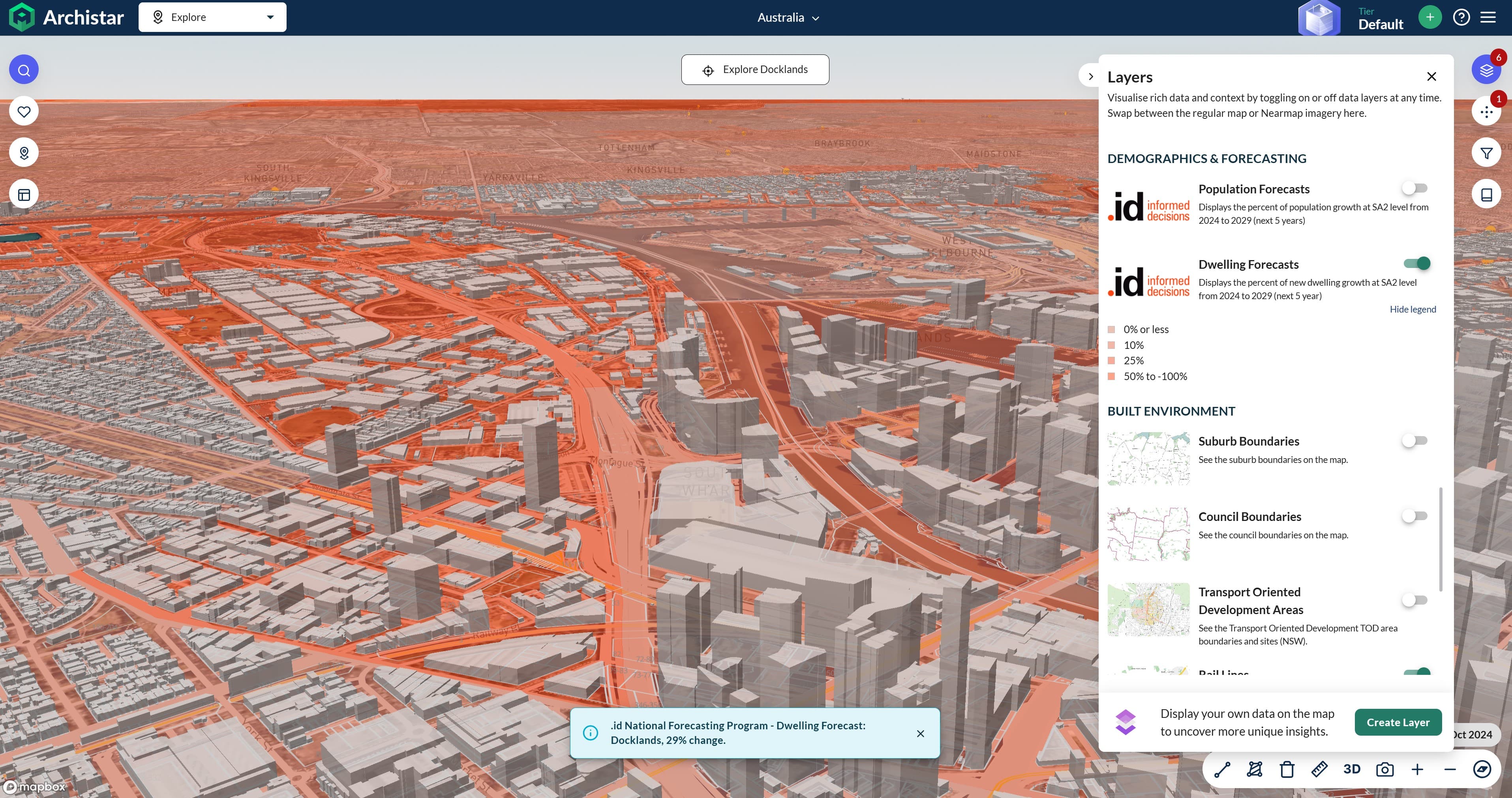As forecasters, we simplify millions of data points into a single forecast number that tells you when, where and how much a place is expected to grow. But that simplicity can disguise the deep and considered research behind every forecast.
A forecast is more than a number – it’s about giving confidence – to your investors, to your community, to your board or to yourself – that you’re making decisions that are based on a reliable and trusted source of information. That you have an independent and expert assessment, built on a foundation of comprehensive research and the knowledge of specialists.
In today’s blog, Liza gives us a snapshot of the research that underpins every forecast we publish, using examples from our recent forecasts for the fast-growing Newcastle and Hunter Valley region of New South Wales.
Our latest population forecasts for New South Wales show regional cities like Newcastle will account for an increasing share of that state’s growth over the next 25 years. But exactly when and where this growth occurs very much depends on when and where new housing will be made available.
What drives population growth in the Hunter-Central Coast region?
The Hunter-Central Coast region is forecast to add 330,000 people, or 11% of New South Wales’ forecast population growth, in the 25 years to 2046.
Demographically, this area grows from natural increase (births outweighing deaths), overseas migration, and ‘internal’ migration from other parts of Australia, especially the northern regions of Greater Sydney.
How is housing development influencing growth in the Hunter Region?
To produce a realistic forecast for an area we need an understanding of:
- The short-, medium-, and long-term housing supply
- The likely order of development on medium- to long-term sites
- The sources of long-term development capacity
This video provides a simple explanation of why housing and development research is a critical step in our process, to develop detailed forecasts for a local area that consider the wider regional and national context of a place.
1. The short-, and medium-term housing supply
There is no single source of comprehensive information about future development, so in the course of forecasting an area, we need to create one by combining information from a range of sources. This is both an input to our population forecasts and an information product in its own right – our Residential Development Forecasts.
To gain a broad understanding of the short-, medium-, and long-term housing supply, we analyse satellite imagery to identify sites cleared and/or under construction, use data sources such as OpenLot and Cordell to track marketing activity for sites yet to commence, conduct site-specific research to identify development applications and their outcomes, and review suburb- and region-wide policy documents to track State and Local Government development plans.
Huntlee Estate (shared between Cessnock and Singleton LGAs) provides an example of how detailed satellite imagery that’s updated frequently allows for refined mapping of development and precise counts of dwellings being constructed. This informs the short-term but also allows for greater confidence in making medium-term estimates as rates of construction are established.
The map below provides an example of how the various pieces of information we use reveal different stages of development across the estate;
- Red shading – housing currently under construction, informs the short-term
- Beige shading – land clearing, site work underway to prepare the location for development, informs the short-term
- Green shading – a development proposal has been approved here, so this site is likely to begin development in the next few years and informs short- to medium-term supply
- Grey shading – an area zoned for additional development, but not yet underway and without an active proposal. Being identified as part of an activity centre zone means that it’s likely to be developed before residential areas that are somewhat further (such as the purple-shaded site)
Understanding the timing and sequence of future development in the short-term

2. The likely order of development on medium- to long-term sites
Typically, there are a number of sites that could commence development in the medium- to long-term of the forecast period. There tends to be less information on these land parcels as compared to those for the short-term, so a big challenge lies in crafting a realistic story of the probable timings. In our recent work on growth fronts such as the Lochinvar suburb in the Maitland LGA, we leaned on the broad site grouping presented in (1) above, combining this with a logic-based sequencing of sites shaded the same grey colour and therefore all identified for development in the medium-term. We considered factors such as proximity of the sites to existing amenities, and patterns of development observed in the suburb in the short-term – the characteristics of sites that tended to commence first in the area and rates of recent past construction – to inform possible timing.

3. The sources of long-term development capacity
The suburb of Medowie, in Port Stephens LGA, is an example where our detailed research yields more nuanced estimates of where future residential land is likely to be situated. Here, we mapped future housing stock (areas shaded grey below) based on the Council policy document Medowie Place Plan 2023. Having these areas clearly identified allows us to allocate dwellings to the appropriate parts of this suburb in the medium-, and particularly the long-term, where supply would otherwise be limited.

We also map residential development areas beyond the 25-year forecast horizon where such are identified. In the suburb of Heddon Greta, in the Cessnock LGA, delving into Council policies yields development sites that are under investigation and form part of the long-term vision of a place. Cessnock City Council’s Heddon Greta – Cliftleigh Corridor Structure Plan 2022 includes several investigation areas for urban release should the need for additional housing arise, which we mapped in yellow below.

By including this information in our overall assessment of potential sources of future housing, we ensure that in all years of our forecast period we are relying on sites identified by a planning authority and can support future housing demand with realistic allocations to areas where this demand may be realised.
Stay up to date with our latest forecasts
The National Forecasting Program is an independent research program from .id (informed decisions), to maintain the most detailed and up-to-date forecasts of population, housing and residential developments in Australia.
Subscribe to updates to be notified whenever we publish new forecasts for an area of interest to you.













